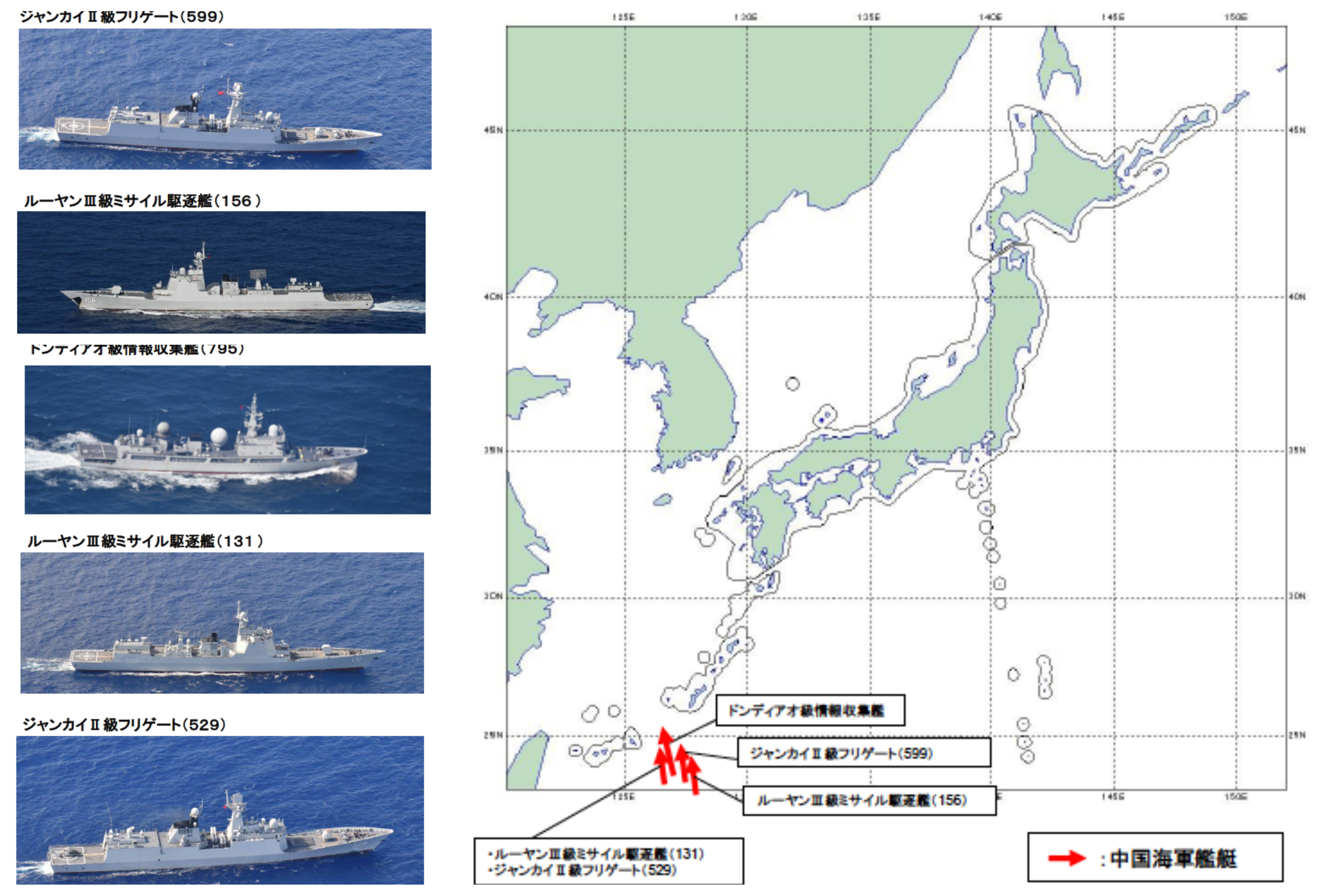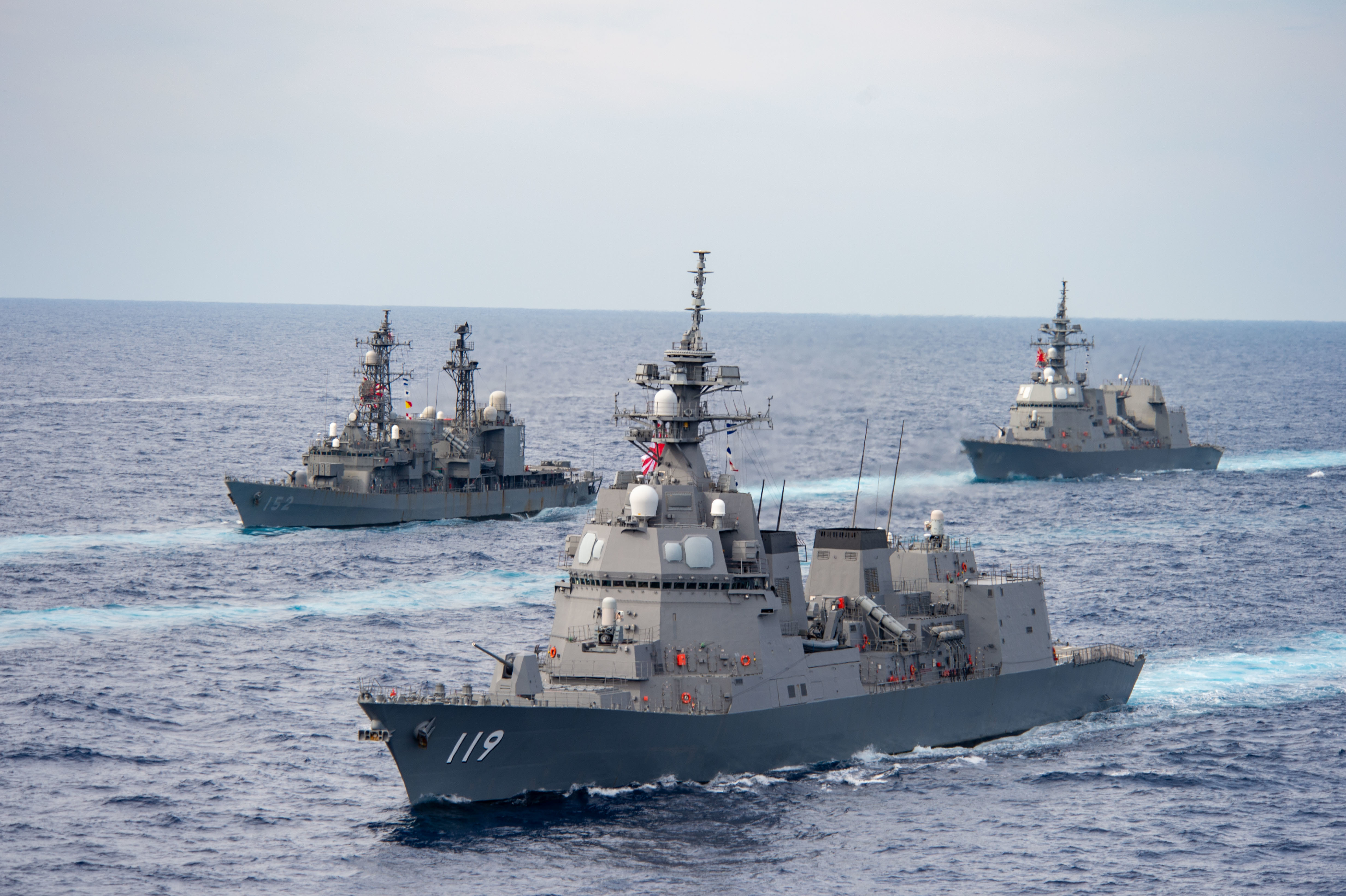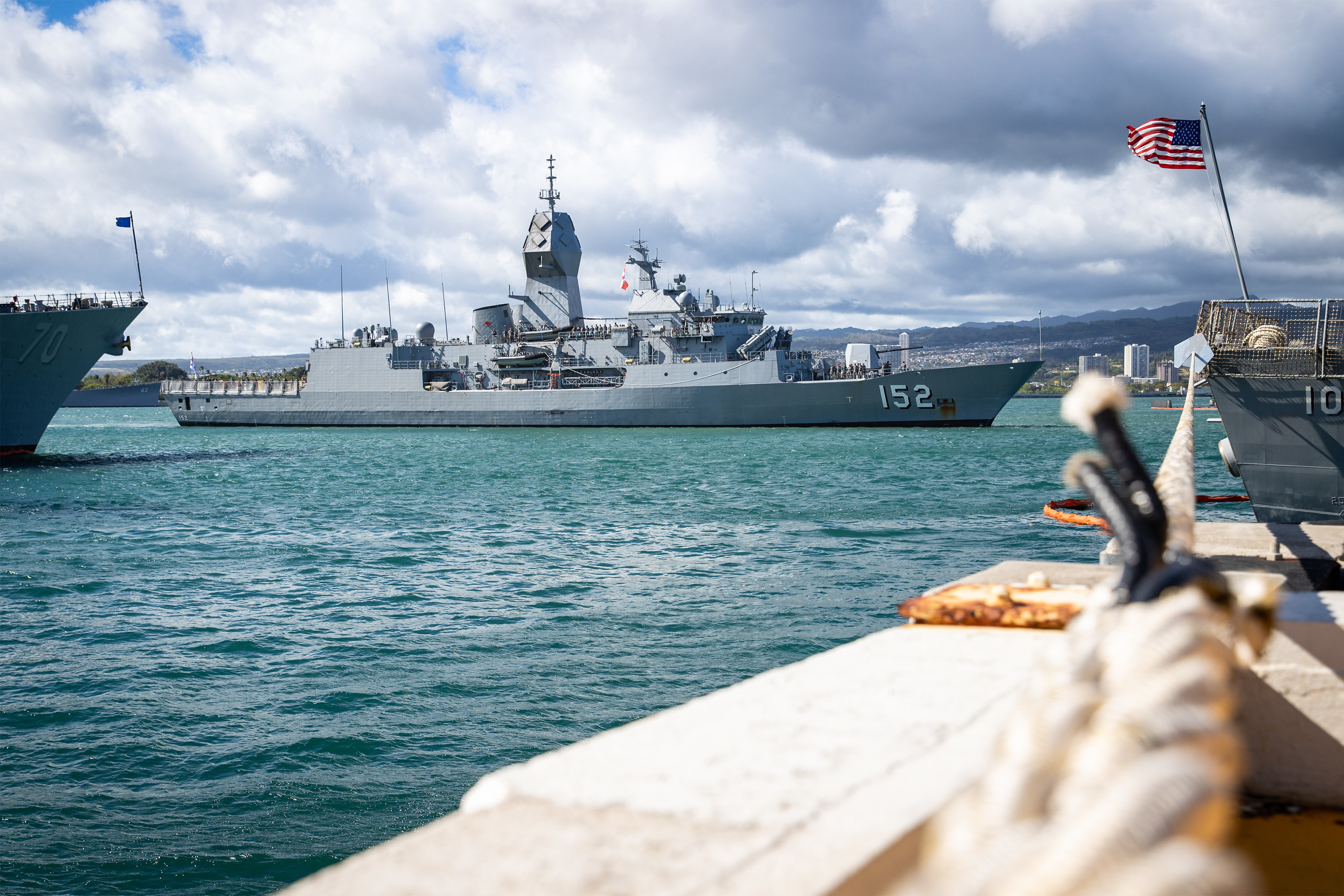
A People’s Liberation Army Navy (PLAN) surface group entered the East China Sea on Wednesday, according to a Thursday Japan Defense Ministry release. The surface group completed a near circuit of Japan since they were sighted in the Tsushima Strait on June 12.
On Wednesday at 11 p.m., three PLAN ships were sighted sailing northwest in an area 130 kilometers northeast of Miyako Island, according to the release. Hull numbers and images provided identified the ships as destroyers CNS Lhasa (102) and CNS Chengdu (120) and replenishment ship CNS Dongpinghu (902).
The ships subsequently sailed through the Miyako Strait into the East China Sea. Japan Maritime Self-Defense Force (JMSDF) destroyer JS Setogiri (DD-156) and a JMSDF P-3C Orion Maritime Patrol Aircraft of Fleet Air Wing 5 based at Naha Air Base, Okinawa, monitored the PLAN ships, the release noted.
The Joint Staff Office release also included a map showing the movements of the three ships with a Dongdiao-class surveillance ship with hull number 794, which was sighted with them in the Tsushima Strait on June 12.
Dongpinghu and Dongdiao 794 sailed east into the Pacific Ocean via the Tsugaru Strait on June 16, while the two destroyers sailed through La Pérouse Strait heading east from June 16 through 17. Lhasa, Chengdu and Dongpinghu were subsequently sighted sailing together on June 19, and the three ships have been sailing together since.
Since Sunday, the JSO has yet to issue any sighting release on Dongdiao 794. Sunday’s news release said 794 was sighted at 1 a.m. that day sailing westwards in an area 90 kilometers northeast of Hachijo Island. The ship subsequently sailed west between Mikura Island and Hachijo Island, part of the Izu Islands group, while monitored by multi-purpose support ship JS Enshu (AMS-4305).
Both Russian and Chinese ships have been operating in the vicinity of the Izu Islands while sailing around Japan in June. A total of seven Russian ships sailed around Japan from June 16-17, and subsequently the PLAN surface group sailed on June 21.
On Thursday, the JMSDF along with the Japan Coast Guard (JCG) held a joint exercise in the waters east of Izu Oshima, which is part of the Izu Islands, possibly in response to the Russian and Chinese activities there. The exercise involved JMSDF destroyers JS Yamagiri (DD-152) and JS Amagiri (DD-154), along with a JMSDF SH-60K helicopter. The JCG units included patrol vessels JCG Akitsushima (PLH-32) and JCG Miyako (PL-201), along with a JCG Super Puma helicopter.

“Through this exercise, we improved the skills of the JMSDF and strengthened our joint response capability with the Japan Coast Guard,” the commander of the JMSDF element said in a news release on the exercise.
The JMSDF has been conducting exercises with the Japan Coast Guard for the purpose of strengthening comprehensive response and cooperation, as well as for the regional security of Japan and surveillance of the sea area around Japan.
On Wednesday, the Japan Defense Ministry announced that Royal Australian Navy (RAN) frigate HMAS Parramatta (FFH154) has been conducting surveillance activities in the Sea of Japan in support of United Nations sanctions on North Korea. The release did not specify the time period this activity took place beyond stating it was happened in late June and that this was the seventh surveillance activity the RAN has conducted since 2018.
The sanctions monitoring also includes surveillance by maritime patrol aircraft from various nations, with Canada saying its CP-140 maritime patrol aircraft was harassed by Chinese aircraft while conducting such a mission from April 26 to May 26.
China has denied the actions.
“Canadian military planes used the implementation of UN Security Council resolutions as an excuse to increase their approach to China Reconnaissance and provocation endanger China’s national security,” Senior Colonel Tan Kefei, a spokesperson for China’s Ministry of National Defense, said during the Ministry’s monthly press conference on Thursday. “China firmly opposes this, and urges relevant countries to stop spreading false information, stop acts that endanger China’s national security and increase tensions in the sea and air, and take concrete actions to maintain regional peace and stability”.
In other developments, Australia’s Defence Department issued a news release on Thursday about Australia’s participation in the Rim of the Pacific 2022 exercise and disclosed that an unnamed Australian submarine was taking part in the exercise.

Australia had only previously stated that landing helicopter dock HMAS Canberra (L02), frigate HMAS Warramunga (FFH152) and replenishment ship HMAS Supply (A195) would be its naval units at the exercise.
The release also disclosed the composition of the Australian Joint Landing Force taking part in the exercise, which is embarked on Canberra, saying it was led by the 2nd Battalion, Royal Australian Regiment and accompanied by personnel and capabilities from other Australian Army units. The release said that 1600 Australian Defence Force (ADF) personnel were participating in the exercise. Australia’s participation and leadership in the exercise highlights the nation’s enduring commitment to sovereign security in the Indo-Pacific region, ADF Chief of Joint Operations Lt. Gen. Greg Bilton said in the release.
“RIMPAC demonstrates Australia’s commitment to both the United States and to preserving the freedoms enjoyed by our regional neighbours,” Bilton said in the release. “We face complex strategic challenges in the Indo-Pacific region, and the Australian Defence Force will take every opportunity to assure our friends that Australia has the ability and the intent to stand by its alliances, agreements and bilateral relationships.”
Four submarines are taking part in RIMPAC 2022, though the nationality of only two submarines – the RAN submarine and Republic of Korea Navy submarine ROKS Shin Dol-seok (SS-082) – have been disclosed so far. At least one of the submarines is likely from host nation United States, while the fourth could be either a second U.S. submarine or a partner nation submarine.





